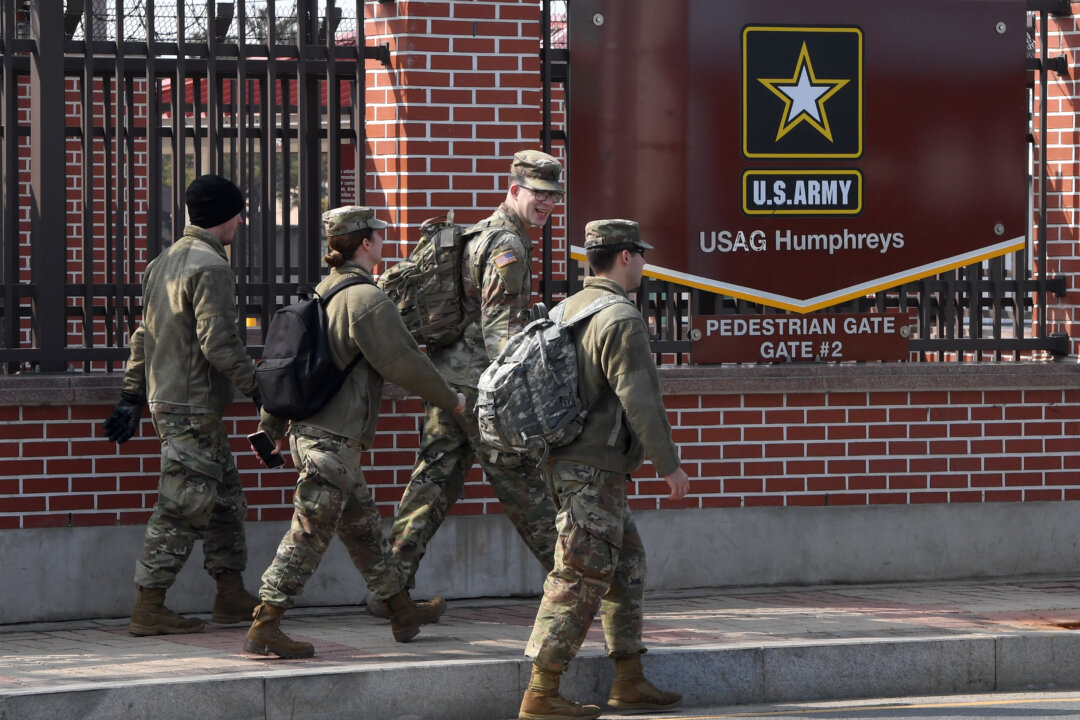The deal mandates that South Korea start its contribution at roughly $1.1 billion in 2026.
The United States and South Korea have tentatively agreed to a new cost-sharing plan, under which Seoul would spend more to host American troops.
The new Special Measures Agreement (SMA), the 12th of its kind since 1991, will increase South Korea’s contribution to the U.S. forces stationed on the peninsula by 8.3 percent, with additional increases every year tied to the country’s consumer price index rather than its defense budget, according to a summary released on Oct. 4 by the South Korean Ministry of Foreign Affairs.
The bilateral agreement, set to take effect in 2026, will run through 2030, pending final approval from South Korea’s National Assembly, which is currently controlled by the opposition party to President Yoon Suk Yeol. The deal does not need approval from the U.S. Congress.
Under the new plan, South Korea’s contribution will start at 1.52 trillion won ($1.1 billion) in 2026. If South Korea’s inflation remains at around 2 percent, the total contribution is expected to reach 1.64 trillion won ($1.2 billion) by 2030, marking a 17.2 percent increase from 2026 levels, with an average annual rise of 3.2 percent.
In contrast, the current SMA, signed in 2021 under then-President Moon Jae-in, tied South Korea’s annual contribution increases to the country’s defense budget growth. This formula led to sharper hikes over the agreement’s term, with contributions rising from 1.04 trillion won ($780 million) in 2020 to 1.4 trillion won ($1.05 billion) by 2025, averaging a 6.2 percent annual increase.
According to Matthew Miller, a spokesperson for the U.S. Department of State, it took eight rounds of negotiations to reach the new SMA.
“The agreement will be a significant accomplishment for both sides and will strengthen our alliance and our shared defense,” Miller said.
The proposed $1.1 billion figure still falls short of what former President Donald Trump had demanded. In 2019, Trump criticized Seoul for “paying about $500 million for $5 billion worth of protection,” a much bigger price tag he deemed appropriate given Seoul’s $1.6 trillion GDP.
Running for president for a third time, Trump maintains that South Korea is not paying enough in the current agreement.
“They were able to renegotiate with the Biden administration and bring that number way, way down to what it was before, which was almost nothing,” Trump said during an interview in April with Time magazine. “Why would we defend somebody? And we’re talking about a very wealthy country. But they’re a very wealthy country, and why wouldn’t they want to pay?”
The United States deploys more than 28,000 troops in South Korea, predominately U.S. Army personnel. Their presence is vital for South Korea’s defense against North Korean aggression, as both sides remain in a conflict that never officially ended but was halted by an armistice in 1953. A heavily mined and barb-wired Demilitarized Zone serves as a buffer, dividing the Korean Peninsula in half along the 38th parallel.

